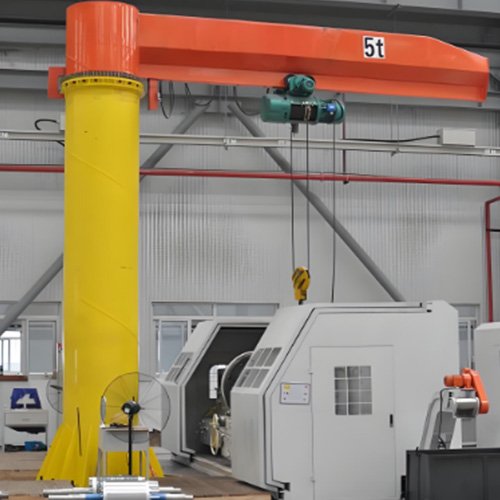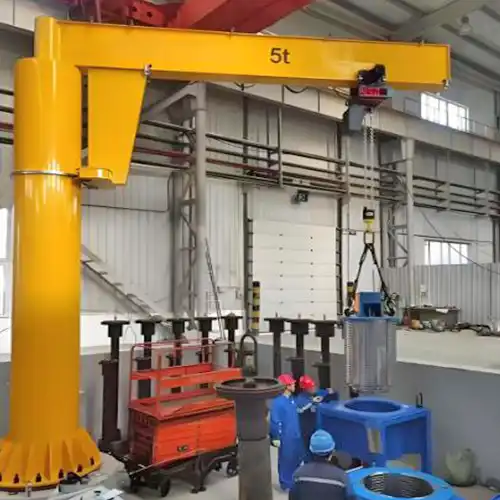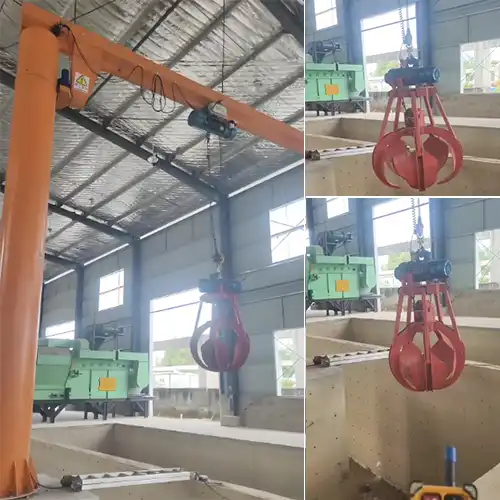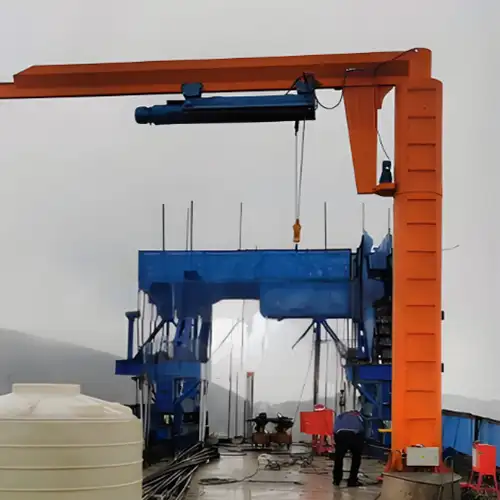Tailor Your 5 Ton Jib Crane: Customization for Industrial Use
5 ton jib crane customized for your particular applications in various industrial sectors. Check optional features for customizing 5 ton jib crane now !
Category: Jib Crane Capacity & Tonnages
Your Trusted Rotating Jib Crane Manufacturer & Supplier
Tailor Your 5 Ton Jib Crane: Customization for Industrial Use
5 ton jib crane customized for your particular applications in various industrial sectors. Check optional features for customizing 5 ton jib crane now!
In industries ranging from manufacturing to construction, the need for specialized lifting equipment has never been more pronounced. The standard off-the-shelf options often fall short when faced with unique challenges and specific requirements. This is where customization steps in, offering a pathway to address these challenges head-on while optimizing efficiency and safety.
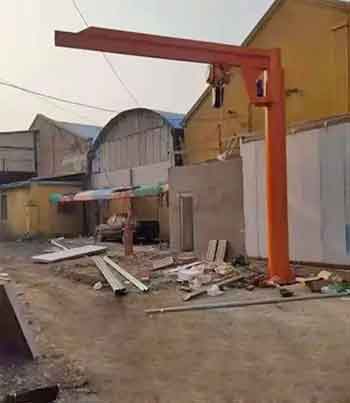
Standard 5 ton Jib Cranes
Before we embark on the journey of customization, let's lay the foundation by understanding what standard 5 ton jib cranes entail.
- Definition and Features: A standard 5 ton jib crane is a versatile lifting apparatus designed to handle loads up to 5 tons within a specific radius. Typically, it consists of a vertical mast, a horizontal boom, and a rotating head. These cranes can be either freestanding or wall-mounted, offering flexibility in installation according to spatial constraints. Their key features include robust construction, smooth rotation, and ease of operation, ensuring efficient material handling in various environments.
- Typical Applications and Industries: Standard 5 ton jib cranes find their application across a spectrum of industries where heavy lifting is a routine necessity. In manufacturing facilities, they streamline production processes by facilitating the movement of raw materials, components, and finished products. Warehouses and logistics centers rely on these cranes for loading and unloading heavy cargo with precision and speed. Additionally, they play a vital role in construction sites for tasks such as erecting structural elements and handling construction materials.
The fundamentals of standard 5 ton jib cranes provides a solid groundwork for exploring the customization options that elevate their capabilities to unprecedented levels. Now, let's venture into the realm of customization and witness how these cranes transcend their standard functionality to meet the most specialized lifting needs.
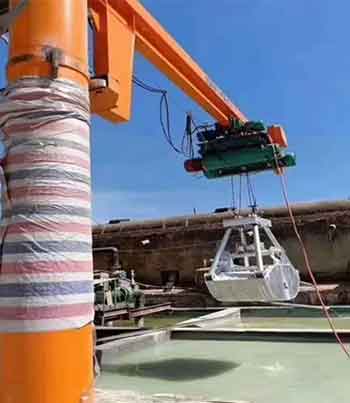
The Need for Customization
While standard jib cranes serve admirably in many scenarios, they inevitably encounter limitations when faced with specialized lifting requirements. Let's delve into why customization becomes imperative in such instances.
- Identifying Limitations: Standard jib cranes, albeit versatile, are engineered with general-purpose functionalities. When confronted with unique challenges such as non-standard load shapes, restricted spatial configurations, or stringent safety regulations, these off-the-shelf solutions may fall short. Moreover, industries with highly specialized processes, such as aerospace or pharmaceuticals, demand precise handling of delicate or hazardous materials, a task beyond the scope of standard equipment.
- Importance of Bespoke Solutions: Enter bespoke solutions – tailored to fit the exact needs of specific applications. Customization empowers businesses to maximize productivity and safety in unique work environments by addressing the shortcomings of standardized equipment. Whether it's modifying the crane's dimensions, incorporating specialized lifting attachments, or integrating advanced safety features, bespoke solutions ensure that every aspect of the crane is optimized for the task at hand. By aligning the equipment with the intricacies of the operation, businesses can achieve unparalleled efficiency and mitigate risks, ultimately enhancing their competitive edge.
In essence, customization transcends the one-size-fits-all approach, offering a pathway to unlocking the full potential of lifting equipment in diverse industries. As we venture further into the realm of bespoke 5 ton jib crane solutions, we'll explore how customization pushes the boundaries of what's achievable, catering to the most specialized lifting needs with finesse and precision.
Your Trusted Slewing Jib Cranes Manufacturer & Supplier
Optional Customized Features for 5 Ton Jib Cranes
Boom Length and Height Customizations
Extended Reach Booms
One of the most transformative customization options for 5 ton jib cranes is the integration of extended reach booms. Let's take a closer look at how these enhancements expand the crane's capabilities and their real-world applications.
- Overview: Extended reach booms are specialized attachments that augment the standard reach of a jib crane, allowing it to access otherwise inaccessible areas or lift loads over obstacles. By extending the horizontal reach of the crane's boom, these attachments enable operators to maneuver with precision in confined spaces or reach distant points within the workspace. Whether it's navigating around machinery on a factory floor or reaching over obstacles in a construction site, extended reach booms offer unparalleled versatility and flexibility.
- Applications: In industrial settings, customized jib cranes equipped with extended reach booms find a myriad of applications. For example, in automotive manufacturing plants, where space is at a premium, these cranes can reach deep into assembly lines to precisely position components for assembly. In warehouses with high shelving, they facilitate the effortless retrieval of heavy items without the need for additional equipment or manual handling. Moreover, in shipyards and dockyards, where lifting heavy loads over vessels is a common challenge, customized jib cranes with extended reach capabilities streamline loading and unloading operations with remarkable efficiency.
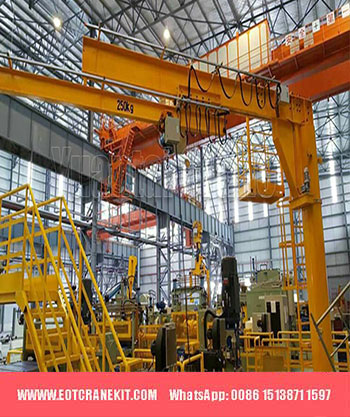
Telescoping Cantilever Jib Crane
Telescoping cantilever jib cranes feature an extendable boom arm that provides additional reach and flexibility compared to fixed-length cranes. This design allows the crane to adapt to various lifting scenarios and work environments where different reach lengths are required.
Key Features
Extendable Boom Arm:
Telescopic Design: The boom arm can be extended or retracted to adjust the reach length as needed.
Enhanced Flexibility: Provides versatility for lifting loads at different distances without repositioning the crane.
Incremental Sections: Typically consists of multiple sections that telescope outwards, allowing for precise adjustment of the boom length.
Compact Storage:
Retractable Boom: When not in use, the telescoping boom arm can be retracted to a shorter length, minimizing space requirements for storage.
Space-Saving Design: Ideal for facilities with limited space, as it maximizes available floor area when the crane is not in operation.
Increased Reach:
Extended Reach: With the ability to extend the boom arm, telescoping cranes can reach farther distances compared to fixed-length cranes.
Accessibility: Enables the crane to access areas that may be difficult to reach with a fixed-length boom, improving overall operational efficiency.
Applications
Telescoping cantilever jib cranes are suitable for various industrial applications, including:
Loading and unloading materials from trucks and trailers.
Lifting and positioning heavy equipment or machinery within a manufacturing facility.
Handling large or bulky materials in warehouses or storage facilities.
Providing coverage in outdoor work areas where different reach lengths are required.
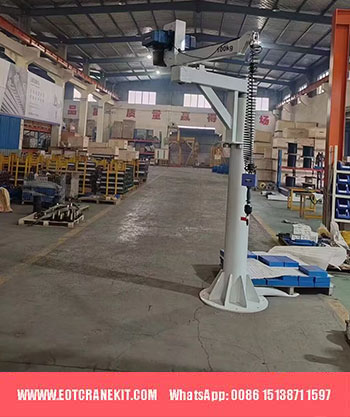
Articulating Cantilever Jib Crane
Articulating cantilever jib cranes, also known as knuckle jib cranes or folding jib cranes, feature multiple articulating sections that allow for increased flexibility and maneuverability in tight or confined spaces.
Key Features
Articulating Sections:
Hinged Design: Consists of multiple sections connected by hinges, allowing the crane to fold or unfold as needed.
Versatile Movement: Each articulating section can pivot independently, providing precise control and maneuverability for load positioning.
Compact Storage:
Foldable Design: When not in use, the crane can be folded into a compact configuration, minimizing space requirements for storage.
Space Optimization: Ideal for facilities with limited overhead clearance or restricted work areas where a traditional jib crane may not fit.
Enhanced Reach and Accessibility:
Multi-Directional Movement: Articulating cranes can reach around obstacles or into tight spaces that may be inaccessible to other types of cranes.
Increased Flexibility: Offers the ability to position loads with greater precision, even in challenging or confined environments.
Applications
Articulating cantilever jib cranes are commonly used in industries such as:
Construction: For lifting and positioning materials in tight or restricted spaces on construction sites.
Maintenance and Repair: Facilitating maintenance tasks on machinery or equipment in confined areas.
Manufacturing: Providing flexible lifting solutions for assembly lines or production processes with limited space.
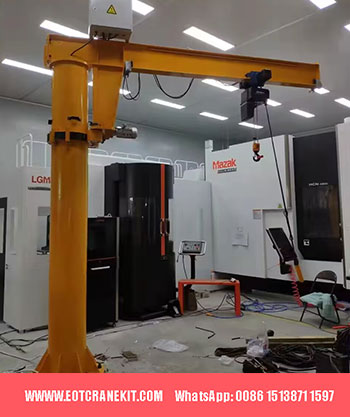
Fixed-Length Cantilever Jib Crane
Fixed-length cantilever jib cranes feature a stationary boom arm that does not extend or retract. This simple and robust design is well-suited for applications where a consistent reach length is sufficient, and space constraints or budget considerations may limit the need for adjustable features.
Key Features
Stable and Reliable:
Solid Construction: Built with a fixed-length boom arm that provides stability and durability during lifting operations.
Minimal Maintenance: Simple design with fewer moving parts reduces the risk of mechanical failures and maintenance requirements.
Cost-Effective:
Affordable Option: Fixed-length cranes are typically more cost-effective than telescoping or articulating models, making them a practical choice for budget-conscious buyers.
Low Operating Costs: Requires minimal ongoing maintenance and upkeep, contributing to lower overall operating costs over the crane's lifespan.
Straightforward Operation:
Easy to Use: With no adjustable features to manage, fixed-length cranes are straightforward to operate, requiring minimal training for operators.
Consistent Performance: Provides reliable lifting capabilities within a fixed range, suitable for repetitive tasks or applications with consistent load sizes.
Applications
Fixed-length cantilever jib cranes are commonly utilized in various industrial settings for tasks such as:
Loading and unloading materials from workstations or production lines.
Lifting and positioning components in machining or assembly operations.
Supporting tooling or equipment in workshops or maintenance facilities.
These cranes offer a cost-effective lifting solution for applications where adjustable reach lengths are not required, and straightforward operation and reliability are paramount.
Case Studies:
Automotive Manufacturing:A leading automotive manufacturer faced challenges in optimizing space utilization on their assembly lines. By customizing their 5 ton jib cranes with extended reach booms, they were able to increase throughput by efficiently positioning components at various stages of assembly, ultimately reducing production time and costs.
Warehouse Logistics:In a bustling distribution center, where space constraints posed a logistical challenge, a customized jib crane with an extended reach boom revolutionized the loading and unloading process. By effortlessly reaching deep into storage racks, the crane facilitated swift and safe movement of palletized goods, enhancing operational efficiency and minimizing downtime.
In both cases, the integration of extended reach booms transformed standard jib cranes into indispensable assets, enabling businesses to overcome spatial constraints and optimize their lifting operations with precision and ease.
As we continue our exploration of bespoke solutions for 5 ton jib cranes, we'll uncover more innovations that push the boundaries of what's possible, elevating lifting capabilities to new heights.
Height Under Boom
The Height Under Boom of cantilever jib cranes refers to the vertical clearance between the underside of the jib crane's boom arm and the floor or working surface beneath it. This specification is crucial in determining the crane's suitability for specific applications and work environments, particularly where overhead clearance is limited or where there are height restrictions that must be accommodated.
The terms full cantilever, drop cantilever, and tie rod cantilever refer to different configurations of cantilever jib cranes, each with its own characteristics and implications for the height under the boom:
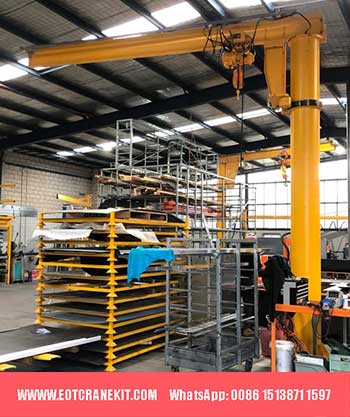
Height Under Boom: The height under the boom of a full cantilever jib crane typically refers to the vertical clearance between the underside of the boom arm and the ground or working surface beneath it. This height can vary depending on factors such as the crane's design, configuration, and intended use.
Advantages: Full cantilever jib cranes offer simplicity in design and operation, providing a clear span for load handling without obstruction from support structures. They are suitable for applications where maximum height under the boom is desired for lifting and positioning loads.
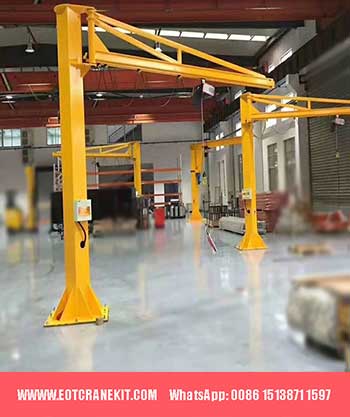
Height Under Boom: The drop section of a drop cantilever jib crane provides increased height under the boom compared to a full cantilever design. This extra clearance may be beneficial for lifting taller loads or accessing elevated work areas.
Advantages: Drop cantilever jib cranes offer improved height under the boom while retaining the simplicity and efficiency of a cantilever design. They are suitable for applications where overhead clearance or vertical reach is a priority.

Tie Rod Cantilever Jib Crane:
Description: In a tie rod cantilever jib crane, the boom arm is supported by a single vertical mast, similar to a full cantilever design. However, tie rods or cables are used to reinforce the boom arm and provide additional stability.Height Under Boom: The height under the boom of a tie rod cantilever jib crane is typically similar to that of a full cantilever design, as the presence of tie rods does not significantly affect the vertical clearance beneath the boom.
Advantages: Tie rod cantilever jib cranes offer enhanced stability and load-bearing capacity compared to full cantilever designs, making them suitable for lifting heavier loads or operating in windy conditions.
Comparison:
Height Under Boom: While all three configurations of cantilever jib cranes provide horizontal reach for load handling, the height under the boom may vary depending on the specific design and construction of each crane.Functionality: Full cantilever jib cranes offer simplicity and a clear span for load handling, drop cantilever cranes provide increased height under the boom, and tie rod cantilever cranes offer enhanced stability and load-bearing capacity.
Application Specifics: The choice between these configurations depends on factors such as the required height under the boom, load capacity, operational environment, and space constraints.
In summary, full cantilever, drop cantilever, and tie rod cantilever jib cranes each offer unique advantages in terms of height under the boom and functionality, allowing for tailored solutions to meet specific lifting requirements in various industrial applications.
Key Considerations for Height Under Boom:
Workspace Constraints:
Understanding the available vertical clearance within the workspace is essential for selecting a cantilever jib crane with an appropriate height under the boom.
Low ceilings, overhead obstructions, or other height restrictions may necessitate a crane with a shorter boom height to ensure safe operation without interference.
Load Clearance:
The height under the boom directly impacts the maximum height that a load can be lifted and positioned without encountering obstacles or obstructions.
It's crucial to consider the size and dimensions of the loads being handled to ensure they can be maneuvered safely within the available clearance space.
Safety and Accessibility:
Sufficient height under the boom is essential for ensuring safe access to the load and for providing clearance for operators, tools, or equipment beneath the crane during lifting and positioning operations.
Inadequate clearance can pose safety risks, such as accidental collisions or entanglements between the load and surrounding structures or equipment.
Versatility and Adaptability:
Depending on the application requirements, it may be beneficial to choose a cantilever jib crane with adjustable height under the boom.
Some cranes offer the flexibility to customize the boom height or to adjust the crane's mounting position to accommodate varying clearance needs in different work areas.
Applications:
Manufacturing and Production: Cantilever jib cranes with ample height under the boom are commonly used in manufacturing facilities for lifting and positioning materials, components, and finished products along assembly lines or workstations.
Warehousing and Distribution: These cranes are also utilized in warehouses and distribution centers for loading and unloading tasks, where vertical clearance is crucial for maneuvering goods within storage areas or onto delivery vehicles.
Maintenance and Repair: In maintenance workshops or service bays, cantilever jib cranes with sufficient height under the boom provide access for hoisting machinery, equipment, or vehicle components during repair or servicing operations.
Advantages of Customizable Boom Length and Height
- Maximized Vertical Reach: Adequate height under the boom ensures that the crane can reach its maximum lifting height without encountering obstacles, maximizing the available vertical lifting space.
- Enhanced Efficiency:Customizing the boom length and height to specific operational needs reduces downtime and increases productivity by ensuring that the crane can handle tasks with minimal repositioning and adjustments.
- Improved Safety:Tailoring the boom dimensions to fit the workspace and tasks helps to avoid accidents caused by oversized or undersized equipment, ensuring safe operation within the designated area.
- Versatility:Customizable features allow the crane to be adapted for various tasks and applications, making it a versatile tool that can evolve with the changing needs of the facility.
- Space Optimization:Custom boom dimensions help in optimizing the use of available space, preventing interference with other equipment and processes, and maintaining a streamlined workflow.
- Adaptability to Various Environments: Cantilever jib cranes with customizable height under the boom can be tailored to fit specific workspace constraints, allowing for versatile deployment in diverse industrial settings.
In summary, the height under the boom is a critical specification for cantilever jib cranes, influencing their suitability for different applications, safety considerations, and overall operational efficiency. Choosing a crane with the appropriate clearance height ensures optimal performance and safety in material handling tasks within various work environments.
Mounting Options for 5-Ton Jib Cranes

Wall-Mounted
Space-Saving Design:
Utilizes Vertical Surfaces: By attaching the jib crane to a wall, the floor space is kept clear for other operations and equipment, making it ideal for congested work areas.
Ideal for Small Spaces: Particularly beneficial in facilities with limited floor space where every square foot counts.
Installation Considerations:
Structural Integrity: The supporting wall must be strong enough to handle the loads and stresses imposed by the crane and its operations.
Height and Reach: Can be customized to reach specific areas, depending on the height of the wall and the length of the boom.
Operational Efficiency:
Fixed Coverage Area: Typically covers a semi-circular area beneath the boom, which can be precisely positioned to service specific workstations.
Ease of Use: Often includes a swivel mechanism for easy rotation and positioning of loads.
Advantages
Cost-Effective: Often less expensive to install compared to free-standing models as it utilizes existing wall structures.
Targeted Application: Best suited for specific areas where frequent lifting is required within a defined space.

Free-Standing
Flexibility in Placement:
No Structural Support Needed: Does not rely on walls or ceilings, making it highly flexible in terms of placement within a facility.
Movable Design: Some free-standing jib cranes are designed to be portable, allowing them to be relocated as needed for different tasks.
Installation Considerations:
Foundation Requirements: Typically requires a strong, stable foundation to ensure safety and stability during operations.
Height and Reach Customization: Boom height and length can be tailored to the specific needs of the operation and facility layout.
Operational Efficiency:
Wide Coverage Area: Can cover a full 360-degree area around the base, providing extensive reach and flexibility.
Standalone Operation: Functions independently of other structures, allowing for versatile application in various areas of a facility.
Advantages Versatile Placement: Can be placed anywhere within the facility, making it highly adaptable to changing operational needs.
Wide Operational Range: Provides extensive movement and coverage, suitable for large, open spaces.
Each mounting option for 5-ton jib cranes offers distinct benefits tailored to different industrial environments and operational requirements. Choosing the appropriate mounting type—wall-mounted, free-standing, or ceiling-mounted—ensures that the crane integrates seamlessly into the facility, enhancing productivity, safety, and space utilization.
Rotation and Coverage Customizations for 5-Ton Jib Cranes
Manual or Motorized Rotation
Manual Rotation:
Ease of Use: Manual rotation allows the operator to move the crane by hand, providing a straightforward and cost-effective solution.
Precision Control: Ideal for applications where precise positioning is necessary, and the loads are not excessively heavy.
Cost-Effective: Generally less expensive than motorized systems, with fewer components and simpler maintenance requirements.
Suitable Applications: Commonly used in workshops, small warehouses, and areas with lighter duty cycles where the operator can easily handle the rotation.
Motorized Rotation:
Powered Movement: Motorized systems use electric motors to rotate the crane, which is especially beneficial for handling heavier loads or when frequent rotation is required.
Enhanced Precision: Provides smooth and precise control over the rotation, which is useful in high-precision applications and larger industrial settings.
User Convenience: Reduces operator fatigue and increases efficiency, as the rotation can be controlled with minimal physical effort.
Remote Operation: Often includes remote control options, allowing the operator to manage the crane from a safe distance.
Suitable Applications: Ideal for heavy-duty applications, larger warehouses, and environments where the crane needs to rotate frequently or handle heavier loads.
Rotation Angle
Customizable Rotation Angles:
Up to 360 Degrees: Jib cranes can be designed to rotate a full 360 degrees, providing complete coverage around the base of the crane.
Partial Rotation: In some cases, a full rotation may not be necessary or feasible. Cranes can be customized to rotate to specific angles such as 180, 270 degrees, or any other required angle to fit the operational space and tasks.
360-Degree Full Coverage:
Maximal Reach: Full 360-degree rotation allows the crane to service a large circular area around its base, maximizing the usable workspace.
Flexibility in Operations: Enables the crane to handle tasks in multiple directions without needing to reposition the base.
Ideal for Central Placement: Particularly effective when the crane is centrally located within a workspace, providing access to all surrounding areas.
Limited Rotation:
Customized Range: Rotation can be limited to a specific range to prevent interference with other equipment or structures.
Safety and Space Constraints: Limiting the rotation angle can enhance safety by avoiding collisions with nearby obstacles and can be tailored to fit within confined spaces.
Controlled Environment: Useful in environments where precise control over the crane's movement is necessary to ensure safe and efficient operations.
Advantages of Rotation and Coverage Customizations
- Enhanced Operational Efficiency:Customizing the rotation mechanism and angle allows the jib crane to be tailored to specific operational needs, reducing downtime and improving productivity.
- Increased Precision and Control:Motorized rotation and customizable angles provide operators with precise control over the crane's movements, essential for delicate or complex tasks.
- Improved Safety:Limiting rotation angles can prevent accidents by ensuring the crane does not interfere with other equipment or structures, enhancing overall workplace safety.
- Versatility and Adaptability:The ability to choose between manual and motorized rotation, as well as customizing the rotation angle, ensures that the crane can adapt to various industrial environments and applications.
Customizing the rotation and coverage options for a 5-ton jib crane enhances its versatility, precision, and efficiency. Whether opting for manual or motorized rotation and adjusting the rotation angle to meet specific needs, these features enable the crane to perform optimally in diverse industrial settings, ensuring that it provides the required reach and maneuverability for a wide range of tasks.
Electrical and Control Systems Customizations for 5-Ton Jib Cranes
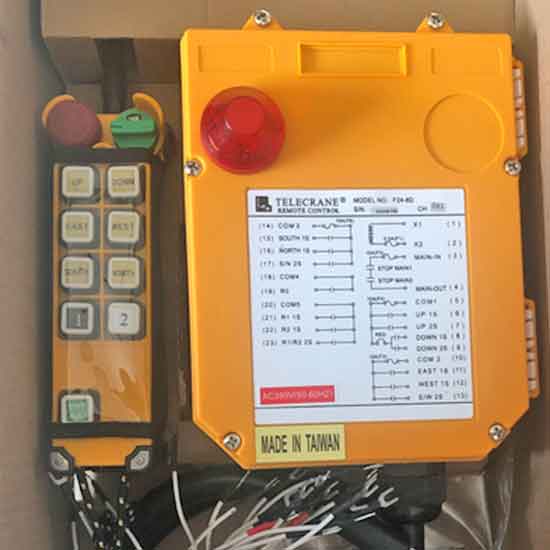
Wireless Remote Controls:
Enhanced Mobility: Allows the operator to control the crane from a distance, providing flexibility and improved safety by keeping the operator away from the load and moving parts.
Improved Visibility: The operator can move to the best vantage point to view the load, enhancing precision and reducing the risk of accidents.
Ease of Use: Simple, intuitive interfaces with clearly marked buttons or joysticks make operation straightforward.
Reduced Cabling: Eliminates the need for long cables, reducing tripping hazards and cable wear.
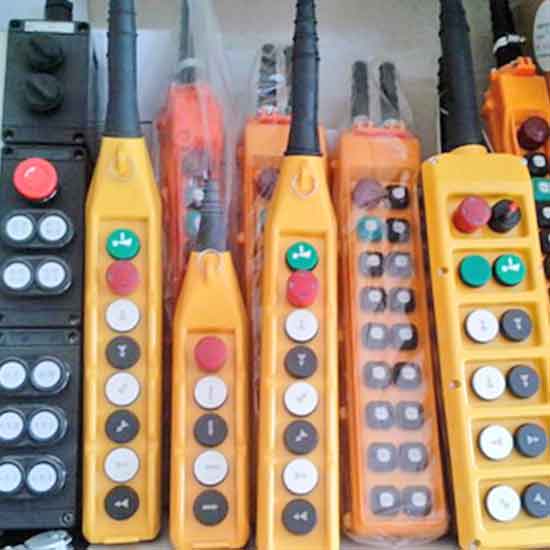
Tethered Operation: Connected to the crane by a cable, pendant controls provide a reliable and direct method of operation.
Robust Design: Typically more rugged and durable, suitable for harsh industrial environments.
Consistent Power: Ensures constant power to the control interface, eliminating the risk of battery failure associated with wireless remotes.
Simple Maintenance: Easier to troubleshoot and maintain compared to wireless systems.
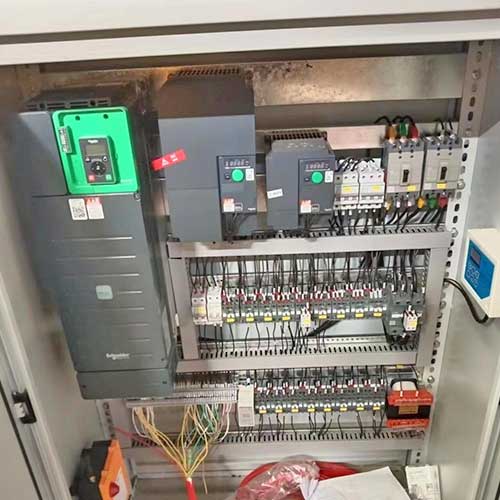
Variable Frequency Drives (VFD)
Smooth Movement:
Precise Speed Control: VFDs allow for adjustable speed settings, providing smooth acceleration and deceleration, which reduces mechanical stress on the crane and load.
Enhanced Safety: Controlled movements reduce the risk of load swing, ensuring safer operation.
Energy Efficiency: VFDs optimize energy consumption by matching the motor speed to the operational demands, leading to energy savings.
Customization Options:
Programmable Parameters: Operators can set specific speed profiles and acceleration/deceleration rates tailored to particular tasks and load requirements.
Overload Protection: VFDs can include overload protection features, preventing the crane from operating beyond its capacity.
Advantages of Electrical and Control Systems Customizations
- Enhanced Safety:Remote controls, VFDs, and emergency stop features significantly improve operational safety by reducing the risk of accidents and allowing for quick responses in emergencies.
- Improved Efficiency:Customizable controls and VFDs enhance the crane's performance by providing precise, smooth, and efficient movement, leading to increased productivity and reduced wear and tear.
- Operator Convenience:Tailored control interfaces, whether through wireless remotes, pendant controls, or push-button stations, ensure that operators can work comfortably and efficiently, reducing fatigue and improving overall job satisfaction.
- Versatility:These customizations allow the crane to be adapted to a wide range of tasks and environments, making it a versatile tool suitable for various industrial applications.
Customizing the electrical and control systems of a 5-ton jib crane enhances its functionality, safety, and user-friendliness. Options like remote controls, variable frequency drives, and tailored push-button stations provide operators with the tools they need to perform tasks efficiently and safely. By adapting these features to specific operational needs, the crane can deliver optimal performance in diverse industrial settings.
Hoisting Options for 5-Ton Jib Cranes
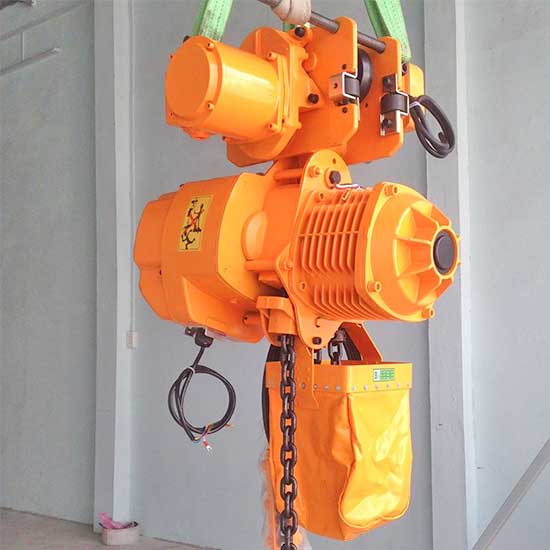
Capacity and Speed Variations:
Customized Capacity: Electric hoists are available in various capacities, allowing for the lifting of loads ranging from light to heavy.
Speed Options: Hoists can be configured with different lifting speeds to suit specific operational requirements, ensuring efficient handling of loads.
Efficiency and Convenience:
Powered Operation: Electric hoists eliminate the need for manual lifting, reducing operator fatigue and increasing productivity.
Precise Control: Operators can precisely control the movement of loads, enhancing safety and accuracy in lifting operations.
Remote Control Compatibility: Many electric hoists are compatible with remote control systems, providing operators with flexibility and convenience.
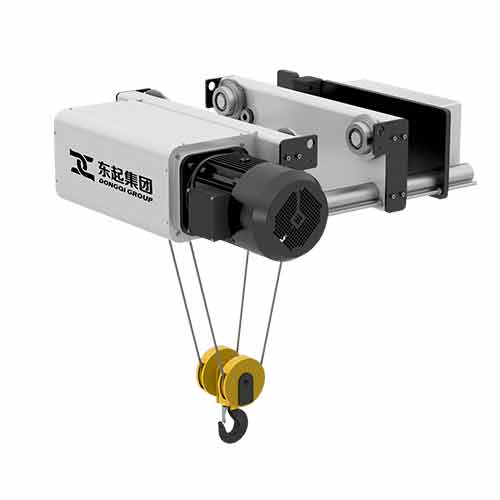
Lifting Needs and Durability:
Chain Hoists: Suitable for rugged environments and heavy-duty lifting applications, offering durability and reliability.
Wire Rope Hoists: Provide smooth lifting motion and are ideal for applications requiring higher lifting heights or precise load positioning.
Flexibility and Adaptability:
Choice of Material: Hoists are available with either chain or wire rope options, allowing for customization based on specific lifting requirements and environmental conditions.
Versatile Applications: Both chain and wire rope hoists can be adapted to various industrial settings, offering flexibility in handling different types of loads.
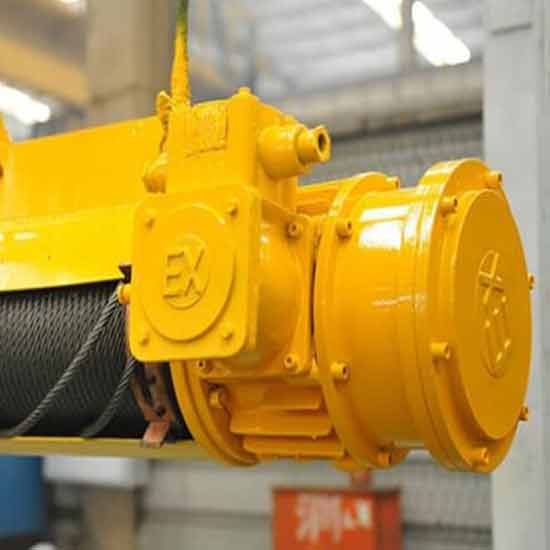
Safety in Hazardous Environments:
Certified Compliance: Explosion-proof hoists are designed and certified to meet safety standards for use in hazardous environments where the presence of flammable gases, vapors, or dust may pose a risk.
Preventative Measures: Constructed with special features to prevent sparks and ignition sources, minimizing the risk of explosions in potentially volatile atmospheres.
Suitable Applications:
Chemical Plants: Used in environments where the presence of flammable materials is common, such as chemical processing plants.
Oil and Gas Industry: Deployed in offshore platforms, refineries, and other facilities where flammable gases are present.
Mining Operations: Employed in mining operations where dust or gas hazards exist.
Advantages of Hoisting Options Customizations
- Safety Assurance:Tailoring hoisting options to specific environments, load requirements, and safety regulations ensures safe lifting operations, particularly in hazardous or demanding settings.
- Operational Efficiency:Customizing hoists based on capacity, speed, and material type improves lifting efficiency, reducing downtime and increasing productivity in industrial operations.
- Adaptability:Offering a range of hoisting options allows for the adaptation of the crane to diverse lifting needs, ensuring versatility and suitability for various applications and industries.
- Compliance and Risk Mitigation:Explosion-proof hoists mitigate the risk of accidents in hazardous environments, ensuring compliance with safety regulations and minimizing the potential for costly incidents.
Customizing hoisting options for 5-ton jib cranes enables operators to tailor lifting capabilities to meet specific operational requirements, environmental conditions, and safety standards. Electric hoists provide efficiency and precision, while the choice between chain or wire rope hoists offers flexibility and durability. Explosion-proof hoists ensure safety in hazardous environments, enhancing compliance and risk mitigation. By selecting the appropriate hoisting options, jib cranes can optimize lifting performance and safety across various industrial applications.
Safety Features for 5-Ton Jib Cranes
Overload Protection
Load Monitoring Systems:
Sensors and Load Cells: Installed on the crane and hoist mechanism to continuously monitor the weight of the load.
Alarm Systems: Alert operators when the load approaches or exceeds the crane's capacity, preventing overloading.
Safety Interlocks:
Automatic Shutdown: Engages when the load exceeds the specified limit, preventing further lifting until the excess weight is removed.
Protects Equipment: Reduces the risk of damage to the crane and hoist components caused by overloading.
Emergency Stop Functions
Immediate Shutdown Mechanisms:
Large, Easily Accessible Buttons: Located on the crane's control panel or pendant station for quick activation in emergency situations.
Rapid Response: Immediately halts all crane and hoist movements to prevent accidents or injuries.
Safety Circuitry:
Redundant Systems: Incorporates multiple emergency stop switches and redundant control circuits to ensure reliability.
Fail-Safe Design: Ensures that the emergency stop function operates even in the event of a power failure or control system malfunction.
Limit Switches
Prevent Over-Travel:
Upper Limit Switches: Detect when the hoist reaches its maximum allowable height, preventing damage to the hoist or crane structure.
Lower Limit Switches: Activate when the hoist reaches the lowest point of travel, preventing collisions with the ground or obstructions.
Positional Accuracy:
Ensures Precision: Limits hoist travel to predefined positions, ensuring accurate load positioning and preventing collisions with surrounding structures.
Protects Equipment: Reduces wear and tear on mechanical components by preventing unnecessary movement beyond specified limits.
Advantages of Safety Features
- Enhanced Operator Safety:Safety features such as overload protection and emergency stop functions minimize the risk of accidents and injuries, prioritizing operator safety in all crane operations.
- Protection of Equipment:Prevents damage to the crane, hoist, and surrounding structures by implementing safety measures that automatically stop operations when unsafe conditions are detected.
- Compliance with Regulations:Ensures compliance with industry safety standards and regulations governing crane operations, reducing the risk of fines, penalties, and legal liabilities.
- Improved Reliability:Incorporating safety features enhances the reliability and longevity of the crane system by minimizing the likelihood of equipment failures and breakdowns due to overloading or misuse.
Safety features are critical components of 5-ton jib cranes, ensuring safe and reliable operation in industrial environments. Overload protection, emergency stop functions, and limit switches prevent accidents, protect equipment, and promote compliance with safety regulations. By prioritizing safety through the integration of these features, jib cranes can operate efficiently and effectively while minimizing risks to personnel and property.
Environmental Adaptations for 5-Ton Jib Cranes
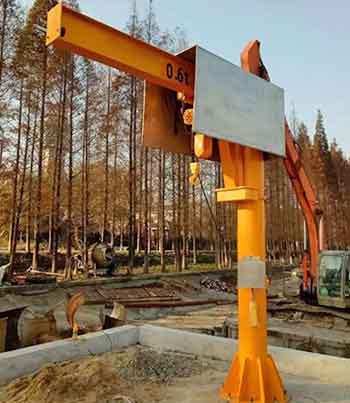
Weather proofing
Sealed Components:
Enclosed Motors and Electronics: Protect critical components from moisture, dust, and debris, ensuring reliable operation in outdoor environments.
IP Ratings: Utilize components with high Ingress Protection (IP) ratings to withstand exposure to water and dust.
Corrosion-Resistant Finishes:
Powder Coating or Galvanization: Applied to structural components to provide a durable barrier against corrosion caused by rain, humidity, and salt spray.
Stainless Steel Components: Utilize stainless steel for critical components to enhance resistance to rust and corrosion.
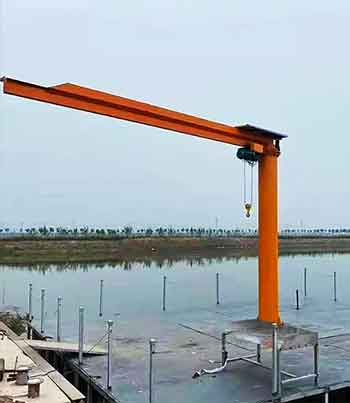
Corrosion-Resistant Materials
Chemical-Resistant Coatings:
Specialized Coatings: Applied to surfaces exposed to corrosive substances to protect against chemical degradation.
Epoxy Coatings: Provide a protective barrier against acids, alkalis, and other corrosive chemicals commonly found in industrial environments.
Non-Corrosive Materials:
Composite Materials: Utilize composite materials or non-metallic components in areas prone to corrosion to prevent degradation and extend the lifespan of the crane.
Plastic Enclosures: Replace metal enclosures with corrosion-resistant plastic alternatives to protect sensitive electronics from chemical exposure.

Heat-Resistant Components
Heat-Resistant Coatings:
High-Temperature Paints: Applied to surfaces exposed to elevated temperatures to prevent discoloration, oxidation, and heat-induced degradation.
Ceramic Coatings: Provide thermal insulation and heat resistance, protecting components from heat-related damage.
Heat-Tolerant Materials:
Heat-Resistant Alloys: Utilize specialized alloys capable of withstanding high temperatures without compromising structural integrity.
Insulating Materials: Incorporate heat-resistant insulation around sensitive components to shield them from excessive heat.
Advantages of Environmental Adaptations
- Extended Lifespan:Environmental adaptations protect the crane from the damaging effects of weather, corrosion, and heat, prolonging its operational lifespan and reducing maintenance costs.
- Reliability in Harsh Conditions:By utilizing weatherproofing, corrosion-resistant materials, and heat-resistant components, jib cranes can maintain reliable performance in demanding environments, ensuring uninterrupted operation.
- Safety Assurance:Environmental adaptations mitigate the risk of equipment failure due to environmental factors, enhancing safety for personnel and preventing accidents in industrial settings.
- Cost Savings:Preventing corrosion, degradation, and damage from harsh environmental conditions reduces the need for repairs and replacements, leading to long-term cost savings for the organization.
Environmental adaptations ensure that 5-ton jib cranes can withstand the rigors of various industrial environments, including outdoor use, corrosive atmospheres, and high-temperature settings. By incorporating weatherproofing, corrosion-resistant materials, and heat-resistant components, these cranes can maintain reliable performance, extend their lifespan, and minimize maintenance requirements, ultimately enhancing safety and reducing operational costs.
Additional Attachments for 5-Ton Jib Cranes
In the quest for customized lifting solutions, specialized attachments play a pivotal role in enhancing the versatility and efficiency of 5 ton jib cranes. Let's delve into the realm of these attachments and their transformative impact on lifting operations.
Exploring Specialized Attachments: Specialized attachments encompass a diverse range of tools and accessories designed to address specific lifting challenges. From lifting magnets capable of handling ferrous materials to vacuum lifters ideal for delicate or porous objects, these attachments expand the capabilities of jib cranes beyond conventional lifting tasks. Moreover, custom tooling tailored to unique materials or components further enhances the crane's adaptability, allowing businesses to tackle specialized lifting requirements with precision and ease.

Lifting Magnets:In a steel fabrication facility, a customized 5 ton jib crane equipped with lifting magnets revolutionized the handling of heavy steel plates and structural components. By securely gripping ferrous materials without the need for slings or hooks, the crane facilitated seamless loading and unloading operations, improving efficiency and reducing manual labor.
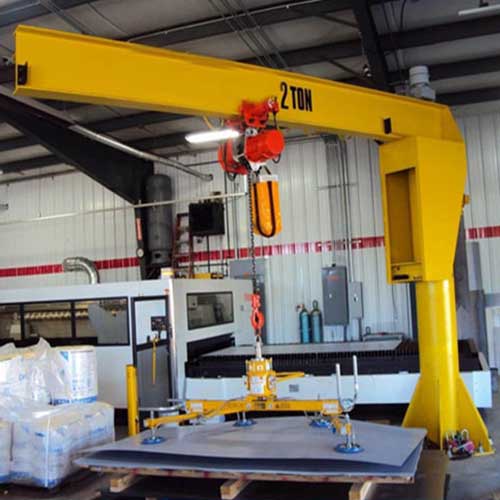
Vacuum Lifters:In a pharmaceutical production facility, where fragile glassware and sensitive materials are commonplace, a bespoke jib crane outfitted with vacuum lifters ensured gentle and precise handling. By creating a secure vacuum seal on non-porous surfaces, the crane enabled operators to lift and maneuver delicate items with utmost care, minimizing the risk of damage or contamination.
Custom Tooling:In an aerospace manufacturing plant, where intricate components demand meticulous handling, a specialized jib crane with custom tooling proved indispensable. By incorporating specially designed grippers and fixtures tailored to the shape and size of aerospace parts, the crane facilitated precise positioning and assembly, ensuring stringent quality standards were met without compromise.
Special Hooks and Grabs
Customized Designs:
Variety of Shapes and Sizes: Available to accommodate specific load types, shapes, and sizes, including cylindrical, rectangular, and irregularly shaped objects.
Specialized Materials: Constructed from materials such as stainless steel, alloy steel, or nylon, depending on the load requirements and environmental conditions.
Adjustable Configurations: Some hooks and grabs feature adjustable arms or jaws to securely grip different types of loads.
Application-Specific Hooks and Grabs:
Coil Hooks: Designed for lifting and transporting coiled materials such as steel coils, wire coils, and rolls of paper.
Plate Grabs: Ideal for handling flat materials such as steel plates, sheets, and panels.
Pipe Grabs: Specifically engineered for lifting and positioning pipes, tubes, and cylindrical objects.
Magnets and Vacuum Lifters
Magnetic Lifters:
Electro-Permanent Magnets: Offer a secure and reliable grip on ferrous materials without the need for continuous electrical power, enhancing energy efficiency and safety.
Permanent Magnets: Provide a permanent magnetic field for lifting ferrous materials, suitable for applications where power sources may be limited or unavailable.
Vacuum Lifters:
Suction Cups: Attach to the load surface and use vacuum pressure to securely grip materials such as glass, plastic, wood, and composite panels.
Customizable Configurations: Vacuum lifters can be tailored with interchangeable suction cup sizes and configurations to accommodate different load shapes and sizes.
Rotating Hooks
Swivel Hooks:
360-Degree Rotation: Allow loads to rotate freely for precise positioning and alignment, reducing the need for manual adjustments and minimizing handling time.
Ball Bearing Swivels: Incorporate ball bearings for smooth and friction-free rotation, ensuring effortless load manipulation.
Locking Mechanisms: Some rotating hooks feature locking mechanisms to secure the load in place once positioned.
Tilt-Adjustable Hooks:
Tilt Functionality: Enable the hook to tilt or pivot, providing additional flexibility for handling loads with varying center of gravity or balance points.
Secure Locking: Equipped with locking mechanisms to fix the hook in a desired tilt position, enhancing stability and safety during lifting and transport.
Advantages of Additional Attachments
- Enhanced Versatility:Special hooks, grabs, magnets, and vacuum lifters allow 5-ton jib cranes to handle a wide range of materials and load types, increasing their versatility and utility in various industrial applications.
- Improved Efficiency:Customized attachments streamline material handling processes, reducing loading and unloading times, minimizing manual labor, and improving overall operational efficiency.
- Enhanced Safety:Specialized attachments ensure secure and stable load handling, reducing the risk of accidents, injuries, and damage to materials, equipment, and facilities.
- Optimized Load Control:Rotating hooks and tilting attachments enable precise load positioning and alignment, enhancing control and accuracy during lifting, maneuvering, and placement operations.
By incorporating specialized hooks, grabs, magnets, and rotating attachments, 5-ton jib cranes can accommodate diverse load types and handling requirements with ease and efficiency. These additional attachments enhance versatility, efficiency, safety, and load control, making jib cranes indispensable tools for material handling tasks in various industrial settings.
Integration Options for 5-Ton Jib Cranes
Automation Systems
Interfacing with Existing Automation:
PLC Integration: Jib cranes can be integrated with Programmable Logic Controllers (PLCs) or other control systems to automate lifting operations.
Sensor Integration: Incorporating sensors such as proximity sensors or load cells enables automated detection of load presence, weight, and positioning.
Synchronization with Production Processes:
Production Line Integration: Jib cranes can be synchronized with production lines or assembly processes to facilitate seamless material handling and transfer.
Automated Workflows: Integration with automation systems allows for predefined workflows and sequences, optimizing efficiency and reducing manual intervention.
Data Logging
Usage Monitoring:
Operational Data Recording: Tracks parameters such as load weight, lift frequency, and duration of use, providing insights into crane utilization and performance.
Historical Data Analysis: Captures data over time for analysis, enabling identification of usage patterns, trends, and potential areas for optimization.
Maintenance Tracking:
Predictive Maintenance: Utilizes data logging to monitor equipment health and performance, enabling early detection of potential issues and scheduling proactive maintenance.
Maintenance Records: Stores maintenance logs, service schedules, and equipment history, ensuring compliance with maintenance requirements and regulatory standards.
Advantages of Integration Options
- Streamlined Operations:Integration with automation systems streamlines material handling processes, reduces manual labor, and improves overall operational efficiency.
- Enhanced Productivity:Automated workflows and data-driven insights optimize crane utilization, minimize downtime, and maximize productivity in industrial settings.
- Improved Maintenance Management:Data logging capabilities enable proactive maintenance scheduling, reducing the risk of unexpected breakdowns and extending equipment lifespan.
- Data-Driven Decision Making:Access to usage and performance data facilitates informed decision making, enabling continuous improvement and optimization of material handling operations.
Integration options such as automation systems and data logging capabilities enhance the functionality, efficiency, and maintenance management of 5-ton jib cranes. By interfacing with existing automation systems and capturing usage and performance data, these integration options enable streamlined operations, improved productivity, and proactive maintenance, ultimately contributing to enhanced safety and cost-effectiveness in industrial environments.
Integration of Advanced Technologies
In the era of Industry 0, the integration of advanced technologies has revolutionized the landscape of material handling, offering unprecedented levels of safety, productivity, and precision. Let's explore how these technologies are seamlessly incorporated into customized jib crane solutions, and the myriad benefits they bring to specialized lifting operations.
Discussing Technology Integration: Advanced technologies such as sensors, automation, and remote control systems are increasingly being integrated into customized jib crane solutions, transforming them into smart and adaptive lifting platforms. Sensors provide real-time data on load weight, position, and environmental conditions, enabling precise control and monitoring of lifting operations. Automation streamlines repetitive tasks, optimizing efficiency and reducing human error. Remote control systems allow operators to command the crane from a safe distance, enhancing safety and flexibility in operation.
Benefits of Technology Integration: The integration of advanced technologies offers a multitude of benefits for specialized lifting operations:
- Enhanced Safety:Sensors provide crucial feedback on load stability and environmental hazards, allowing operators to make informed decisions and prevent accidents. Automation reduces the need for manual intervention in hazardous environments, minimizing the risk of injuries.
- Improved Productivity:Automation accelerates lifting processes, reducing cycle times and increasing throughput. Remote control systems enable operators to multitask and oversee multiple lifting operations simultaneously, maximizing efficiency.
- Greater Precision:Sensors ensure precise positioning of loads, minimizing errors and rework. Automation maintains consistent lifting parameters, ensuring uniformity in material handling tasks.
- Remote Accessibility:Remote control systems enable operators to control the crane from anywhere within the facility, providing flexibility and convenience in operation. This is particularly beneficial in environments with limited visibility or accessibility.
By harnessing the power of advanced technologies, customized jib crane solutions are not only capable of meeting the most demanding lifting requirements but also setting new standards for safety, productivity, and precision. Whether it's in manufacturing, construction, or warehousing, these smart lifting platforms empower businesses to optimize their operations and stay ahead in a rapidly evolving landscape.
As we continue our exploration of bespoke solutions for 5 ton jib cranes, we'll uncover more innovations at the intersection of technology and material handling, pushing the boundaries of what's achievable and redefining the future of lifting operations.
Cost Considerations and ROI
When contemplating customized jib crane solutions, it's crucial to weigh the initial investment against the long-term benefits they bring. Let's delve into the cost considerations and analyze the return on investment (ROI) of tailored solutions compared to standard configurations.
Evaluation of Cost Implications: Customized jib crane solutions often entail higher upfront costs compared to standard configurations. The customization process involves engineering design, fabrication, and integration of specialized features, which can incur additional expenses. Factors such as the complexity of customization, the inclusion of advanced technologies, and the need for specialized materials or components can further impact the overall cost.
However, it's essential to consider the total cost of ownership over the crane's lifespan. While standard configurations may offer a lower initial price point, they may not fully address the unique requirements of specialized lifting operations, leading to inefficiencies, downtime, and potential safety risks. Customized solutions, on the other hand, are tailored to optimize performance and adaptability, ultimately delivering greater value over time.
Analysis of ROI and Long-Term Benefits: The return on investment (ROI) of customized jib crane solutions extends beyond monetary gains to encompass improvements in productivity, operational efficiency, and safety. By investing in tailored solutions, businesses can unlock a myriad of long-term benefits:
- Increased Productivity:Customized jib cranes are optimized for specific applications, streamlining material handling processes and reducing cycle times. This leads to increased throughput and higher production output, translating into tangible gains in revenue and profitability.
- Operational Efficiency:Tailored solutions are designed to minimize downtime and maximize uptime, ensuring continuous operation and optimal resource utilization. By eliminating inefficiencies and bottlenecks, businesses can achieve greater operational efficiency and maintain a competitive edge in the market.
- Enhanced Safety:Customized jib cranes are equipped with advanced safety features and technologies, mitigating the risk of accidents and injuries in the workplace. By prioritizing safety, businesses can avoid costly downtime, worker compensation claims, and regulatory fines, ultimately safeguarding their reputation and bottom line.
- Adaptability and Future-Proofing:Customized jib cranes are built to adapt to evolving industry trends and changing business needs. Whether it's integrating new technologies or accommodating shifts in production processes, tailored solutions offer flexibility and scalability, ensuring long-term relevance and value.
In conclusion, while customized jib crane solutions may require a higher initial investment, their superior performance, efficiency, and safety justify the cost over time. By carefully evaluating the ROI and considering the long-term benefits, businesses can make informed decisions that drive growth, innovation, and success in their respective industries.
As we conclude our exploration of bespoke solutions for 5 ton jib cranes, it's evident that customization is not just a luxury but a strategic investment in optimizing lifting operations and unlocking new opportunities for business growth.
Case Studies
Let's delve into real-world examples of successful customization projects for 5 ton jib cranes, showcasing the challenges faced, the tailored solutions implemented, and the remarkable outcomes achieved across diverse industries.

Automotive Manufacturing: Precision Handling
Challenge:A leading automotive manufacturer faced challenges in efficiently handling large, unwieldy components within tight production spaces.
Solution:A customized 5 ton jib crane equipped with extended reach booms and specialized lifting attachments was deployed. Additionally, advanced sensor technology was integrated to ensure precise positioning and prevent collisions.
Outcome:The tailored solution enabled seamless handling of components, reducing production cycle times by 20% and minimizing the risk of damage or workplace accidents. The enhanced efficiency translated into significant cost savings and improved overall productivity on the assembly line.

Pharmaceutical Production: Delicate Material Handling
Challenge:A pharmaceutical production facility sought a lifting solution capable of safely handling delicate glassware and sensitive materials with utmost precision.
Solution:A bespoke jib crane with multi-axis movement capabilities, vacuum lifters, and remote control functionality was designed and installed. Additionally, automation features were incorporated to streamline repetitive lifting tasks.
Outcome:The customized solution facilitated gentle and precise handling of fragile materials, minimizing the risk of breakage or contamination. With enhanced efficiency and safety, the facility achieved faster production cycles and adherence to stringent quality standards, ultimately enhancing its competitive edge in the pharmaceutical market.
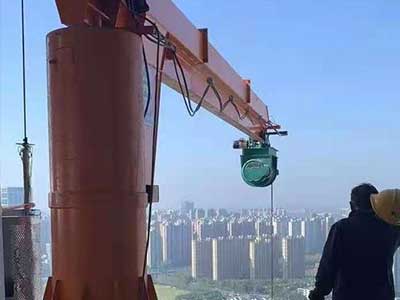
Construction Site: Versatile Material Handling
Challenge:A construction company faced challenges in efficiently maneuvering heavy construction materials across uneven terrain and confined spaces on a bustling job site.
Solution:A tailored jib crane solution with multi-axis movement capabilities, rugged construction, and remote control functionality was deployed. Additionally, advanced sensor technology was integrated to ensure safe and precise material handling operations.
Outcome:The customized crane solution transformed material handling processes on the construction site, improving operational efficiency and worker safety. With the ability to navigate challenging terrain and adapt to varying lifting requirements, the crane facilitated smoother construction workflows and reduced project timelines, ultimately delivering cost savings and client satisfaction.
In each case study, the customization of 5 ton jib crane solutions addressed specific challenges faced by businesses in different industries, resulting in tangible improvements in productivity, safety, and operational efficiency. By leveraging tailored solutions that align with their unique requirements, businesses can overcome obstacles, maximize their lifting capabilities, and achieve sustainable success in today's competitive landscape.
Conclusion
In material handling, the journey doesn't end with standard solutions—it begins with customization. Throughout our exploration, we've witnessed the limitless possibilities that await with bespoke 5 ton jib crane solutions tailored to specialized lifting applications.
From extended reach booms and specialized attachments to multi-axis movement capabilities and integration of advanced technologies, the customization options are as diverse as the challenges they address. Whether it's streamlining production processes in automotive manufacturing, ensuring precision handling in pharmaceutical production, or navigating complex terrain on construction sites, customized solutions empower businesses to optimize efficiency and safety in material handling operations.
Related Products

Latest project
150 Ton Overhead Crane Installation Feedback – Paraguay Case
QDX 150 ton overhead crane in action in Paraguay. Installation photos, video, and client feedback show performance, safety, and heavy-lifting efficiency.
Free consultation to Confirm Parameters & Specifications and Get
Latest Crane Price & Crane Rate.
- Types of overhead cranes : _______?
- Optional: Overhead travelling crane, goliath gantry crane,Slewing jib crane, Single girder or double girder crane,small portable crane or kbk crane, etc.
- Capacity of overhead crane: _______?
- Optional: 0.25ton, 0.5 ton, 1 ton, 2 ton, 3ton, 5 ton, 10 ton,15ton, 20ton, 25 ton, 30ton,35ton, up to 550ton, etc.
- Crane span & lifting height : _______?
- Crane travelling length : _____?
- Control of overhead crane:_______?
- Optional: pendant/ remote/cabin control
- Voltage supply of overhead crane:_____?
- Eg,: 380V50/60HZ,3Phase or others,etc.
- Application/usage of crane:_______?
- Eg,: Steel mill, ,injection mold, cement,stone, concrete,granite, general manufacturing, etc.
Just leave a message via the contact form and our hoist and crane engineer will contact you with in 24working hours.
Get In Touch
